
Donate to Innerviews
Since 1994, Innerviews has provided uncompromising, in-depth interviews with musicians across every genre imaginable. And it does that with no trackers, cookies, clickbait, or advertising.
Your donations are welcome to help continue its mission of highlighting incredible music and artists, without any commercial considerations.
Your contributions will be instantly transformed into stories and videos, and cover hosting and web management costs. Importantly, your dollars will help ensure Innerviews remains absolutely free to all visitors, independent of their ability to financially support it.
Please consider making a donation today by using the PayPal QR code below.

Sonar with David Torn
Wild Abandon
by Anil Prasad
Copyright © 2018 Anil Prasad.
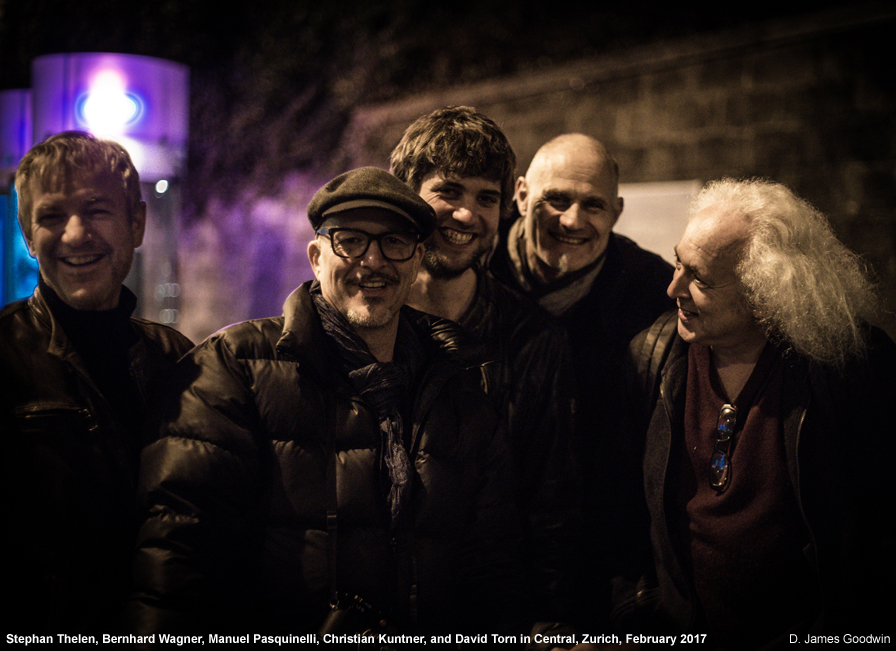
The making of Sonar’s fourth release Vortex was all about living in the moment. After three quartet albums exploring the edges of minimalist groove, the Swiss group partnered with renowned guitarist, composer and producer David Torn for its new recording.
The band, comprised of guitarists Stephan Thelen and Bernhard Wagner, bassist Christian Kuntner and drummer Manuel Pasquinelli, has long been celebrated for combining the visceral power and dynamics of art rock with a minimalist aesthetic. For Vortex, the group, known for precision-based tritone compositions, wanted to add an element of wild abandon and unpredictability to the mix. It also wanted the recording to be focused on real-time interaction between the musicians with minimal post-session overdubs.
The quintet decamped to Powerplay studios in February 2017, located in Maur, Switzerland, 20 minutes outside of Zurich. Together with engineer D. James Goodwin, they set about combining Thelen’s compositions with Torn’s production oversight. But what began as a production relationship with the intention of having Torn also occasionally guest on tracks, rapidly evolved. Torn ended up performing on every track, essentially becoming a fifth band member throughout the sessions. They even stepped outside Sonar’s composition-focused approach and recorded an entirely-improvised track titled “Lookface!” which closes out Vortex.
Part of what makes Vortex such a successful collaboration is the chemistry between the members of Sonar and Torn. The sessions were full of energy and camaraderie. Things got “into the zone” within hours of starting, which meant the majority of the sessions’ output found their way onto the final album. The group also had great fun together, with Torn’s humorous take on the world keeping everyone laughing and defusing any moments of creative tension that arose. The fact that copious amounts of absinthe, red wine, and Swiss chocolate and cheese were consumed during many late-night gatherings probably also helped.
Innerviews was invited to observe the sessions and document them as they evolved in a multi-part video series. This interview with Thelen and Torn took place just before the album was released in March 2018 on RareNoiseRecords. Both offer candid reflections on the creative process and the completed album. They also describe what’s ahead for them, collaboratively and solo.

Describe how this collaboration came about.
Thelen: In early 2016, I started thinking about the next Sonar album and who the producer could be. I was visiting Henry Kaiser at his house in California and—knowing that Henry liked Sonar very much—asked him who he would recommend as a producer. Henry didn’t have to think very long to come up with David Torn's name. He knows David well, so he wrote him an email telling him he might want to contact me about a production job, which David did.
I’ve loved David’s music and his playing ever since I saw him play live with Jan Garbarek in Zurich in the 1980s. It’s interesting that Bernhard Wagner was at that same concert, but we didn’t know each other at the time. David’s Cloud About Mercury album was a life-changing record for me. I even formed a band called Dolphin Ethics that was very obviously influenced by the lineup and the technology that was used on that record. I especially like the amount of space that David uses in his playing and the way he combines experimental sounds and effects with a deep and raw emotionality.
Torn: Henry emailed me and said “There’s this Swiss band Sonar that uses tritone tunings. They’re pretty minimalist and you should check them out. I think you should produce it.” He felt I would be the best possible producer for them and was super-encouraging. His sensibility is great, so I decided to get in touch with them after checking out some of their music. I first listened to Black Light and then had a brief discussion with Stephan over email. I dug into Black Light more after that to get an idea of the band’s continuity and development. I enjoyed the music right away. It has a boldness within its sparseness. They take a lot of time to develop an idea within the pieces and that appealed to me.
The dumbass, semi-pop critic in me initially said “This reminds me of the breakout King Crimson Discipline lineup from 1981 with pattern-oriented guitars in a rock context.” However, I quickly noticed after a few listens that this was related more to something like the minimalism Nik Bärtsch explores. And in fact, if there weren’t guitars playing these parts, there would be no relationship at all to King Crimson. That was an epiphany for me. It was a perfect realization and enabled me to develop how I thought about the music and what my role might be. I ultimately realized “Yeah, this could be really good.” I started having ideas quickly. I felt some of the rock elements could be more rocking and that things could be rougher sounding. I also had minor conceptual ideas that would set up a contrast between precision and design of the music. I wanted to add another layer to it. After another conversation, Stephan and I agreed to do the project. I also said I’d like to bring my own engineer D. James Goodwin. The "D" is for Daniel. Stephan agreed and off we went.
Thelen: King Crimson was a very big influence on me, specifically the music from 1973-74—the Starless and Bible Black period. After David contacted me by email, I called him and we spoke on the phone for over an hour. He told me a lot of interesting and funny stories and I knew from the beginning that this was going to be great. I could tell I could trust him completely. We spoke about the timeframe of the recording, the music I had composed, mixing, mastering, the studio, the equipment, his production philosophy—everything that has to do with the recording of an album. Without any specific ideas or plans, I asked if he could possibly bring his guitar along to the recording sessions and perhaps play with us on a few tracks—something which he immediately agreed to do.

How did the musical relationships evolve across the week you spent together during the sessions?
Thelen: I was the last person to arrive at the studio and when I did, David, Daniel and my bandmates were all sitting at the table in the dining room talking and laughing like one big family. This high level of extremely good social interaction got better and better throughout the week—fueled by lots of good wine and absinthe—and we really had a great time together.
We recorded the first track “Red Shift” as a quartet, with David and Daniel in the control room. After a couple of takes, I asked David if he would like to play a take with us. By then, he had heard the piece a few times, but didn’t have any other information about the track. From the first second on, his playing was so intense and powerful that his energy immediately transferred to the band—especially the rhythm section, and we played with so much more energy and power. It was really remarkable. David's sound meshed so perfectly with our sound, sonically and conceptually. Everybody was just stunned. You were there Anil, and you took me aside and said “You have to have David play on every track. Seize this remarkable and unique opportunity.” So, that’s what we did. I think David really enjoyed playing with us and that we gave him enough space to do what he does best. He might have felt a little uncomfortable at times, because he couldn’t spend as much time in the control room as a producer, but it worked remarkably well.
Torn: It was a series of epiphanies for me. I didn’t want my performing on the music to get in the way of production. Typically, I’m able to help with performing aspects, arrangements and left-field sound ideas. I need perspective to contribute those. Also, as someone in the studio with the band, I was concerned about interrupting the flow and staying out of the band’s way.
We initially recorded “Red Shift” without me and then I improvised on it. Then we did another version of that piece with us all together and I improvised through it all. Stephan then sat me down and said “Listen, you’re energizing the band. Would you play on everything? Everybody is onboard with the idea.” I said “No!” [laughs] I felt that was too much of a surprise. At first, I fought that idea because I thought I was going to ruin the music, no matter how tasteful and inspired I might be within an improvisational setting. I didn’t want to junk the music because it’s so based on development and time. But Stephan is very calm and considerate in discussion. He had some help from you Anil and others cajoling me within an hour of that idea going down. I spoke to Daniel and concluded “Let’s see how it goes. I’ll keep doing it if it keeps working.” And it kept on working.
I had got to know Stephan prior to the recordings and knew his great capabilities. What I quickly realized in the studio was that Manuel Pasquinelli and Christian Kuntner are spectacular as a rhythm section. Manuel is relatively free in the band—not as much as I was, but he had freedom to express himself in ways that weren’t on the written page, as long as he was within the written time. I got to interact with him in that way and it developed over the session.
Bernhard Wagner and I had a lot of great fun together, too. I love him and his time is impeccable. He was playing written parts but was super-interactive during the sections that had me improvising over them. It all felt really, really good.
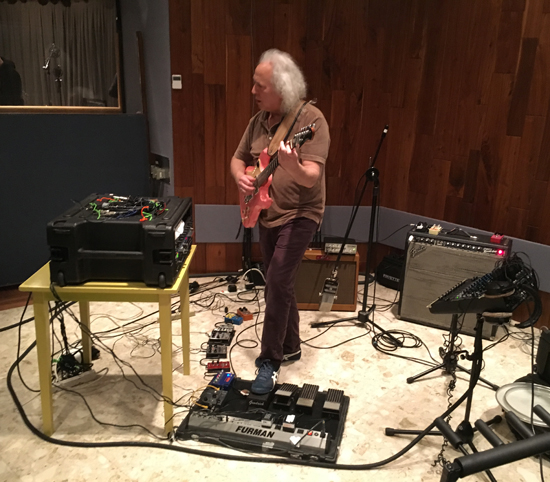
What were the biggest surprises you both experienced as you worked together?
Torn: I was surprised at the positivity of the first couple of improvisations I was involved in. I was also surprised that the energy and positivity seemed to increase as the session went on. It made me feel good as I continued contributing. I’m a complex, old guy. [laughs] I had all kinds of things in my head I was concerned about given that I was supposed to be producing at the same time. I’m often thinking about what will happen with the mix and editing. When considering editing, I’m thinking about ensuring there’s enough thematic content in what I’ve done. I also was trying not to be the star of the show. A friend of mine, David Arnay, who was in my earliest group Zobo Funn Band, recently said to me “Do you listen to the old Zobo stuff at all?” I said “It’s really hard for me. I play constantly, too fast and way too much. The solos go on forever.” David said “Well, that’s what the band was about wasn’t it? We lived for you to play those solos.” [laughs] He meant it as a compliment, but it made me feel kind of bad. I thought “Oh man, did I ignore everybody else?” I didn’t want that to happen here.
Thelen: I was surprised by how easy, uncomplicated, funny, and productive it was to work with David. I was also very pleased to notice that he really seemed to like my compositions and the way Sonar played them—something I maybe was a little bit nervous about before the sessions began. The chemistry was perfect from the first moment David met the band. It couldn’t have worked out better. A big part of this was of course David’s sense of humor which was omnipresent and which made everybody feel comfortable and relaxed.
I think David was also truly surprised by how well we play together as a real band, as opposed to being a collection of individuals. In my opinion, it’s infinitely more important for a band to play together as a cohesive unit than how technically accomplished the single players are. In Sonar, we really focus on the interaction of the musicians, not just on an intuitive level, but also on a conceptual level by pushing the limits of how much the patterns and the polyrhythms of the music can be split across the four instruments of the band. This involves, for instance, what we call “ping-pong guitars”—splitting the guitar pattern so that Bernhard plays one note, I play the next, and so on. This has implications for the geometry of the music, because I’m usually on the far right and Bernhard is the far left side of the stereo image. Another typical example would be splitting the instrumentation of a polyrhythm, so the hi-hat and one guitar play one rhythm while the bass drum and the bass guitar play a different rhythm in a different time signature. I think David and Daniel were both surprised by how we pulled this off with power and precision because they know that this kind of interaction takes years of practice and implies that the musicians know each other very well.
David, elaborate on what it meant for you as the producer to be in the studio during the majority of the sessions.
Torn: It did affect me and I admit I initially wasn’t entirely happy about the situation. In order to play, I had to sacrifice some of my listening as a producer. Now, Daniel is also a producer. He’s still going to get great sounds. He’s on top of everything. But in his role as engineer, he wasn’t going to make the arrangement suggestions I might have made or provide the same personal perspectives I might have had more of had I been in the control room more often. It took me a few tracks to let go of that and it was a strange thing. I was very cognizant about how people might perceive my playing. This isn’t my band. These are Stephan’s compositions and the band’s arrangements. I was learning their music on the fly. I didn’t have anything written out for me except for a couple of chords here and there. A couple of pieces on the album are nearly completely modal and the others have key signature changes in them. I had to learn all of that as I played them. It was a strange shift to be in my head as I focused on being a player on the session.
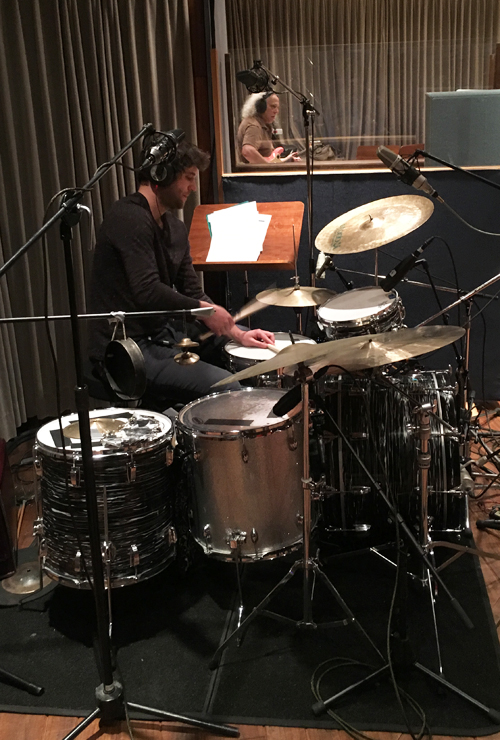
Describe the studio environment you worked in.
Thelen: Powerplay is a legendary studio in Switzerland and has a perfect location, close to Zurich but on the countryside right next to a beautiful lake. I find it easier to focus when the studio is slightly remote and the band can eat and sleep in the studio. David and Daniel had hotel rooms close by, so they arrived in the morning and stayed in the studio until late in the evening.
Torn: I really like the studio. The staff were prepared for us. The equipment was in great shape and everyone was super-supportive and helpful. The guitar amplifiers and all the gear were of a high standard. They had a SSL console, vintage Studer gear and recent digital stuff, and every Lexicon piece I would expect to see in a high-end studio. There were alpacas across the road which you could see right out the window. It was a nice place to be in.
Tell me about Daniel's contributions as an engineer and presence during the sessions.
Thelen: He’s the kind of person you just like to have around. Daniel’s hard-working, smart, patient, funny, and friendly. He understood what we were trying to do and did everything he could to get the results we were looking for. So, his influence was positive in every way. Sound-wise, he had a rather gritty and aggressive approach, but we had talked about that before we started recording and we were all good with that.
How did the approaches of the three guitarists mesh together?
Thelen: I never doubted that David’s free and expressive style would mesh perfectly with the clean, disciplined and precise approach that Bernhard and I have in Sonar. It’s a bit like Yin and Yang, two sides of a coin, the two opposing ends of a ring-shaped world, and the wave and particle nature of light. So, we never got in each other’s way. David also played with tons of effects over a tube amplifier while Bernhard and I went direct through a Line 6 preamp, so the differences are not only in the style of playing, but also in the sound.
Torn: I chose my moments as best I could. We hardly edited anything out. I think that’s because I wanted to play mostly when I felt musically confident that this was a spot in the piece where something melodic or some weird, rhythmic looping thing could benefit the patterns Stephan and Bernhard were playing. I left a lot of space and tried to contain moments where I felt explosive, but didn’t want to get in the way of the piece to the point where they call the paddy wagon and take me away in a straightjacket. [laughs]
Daniel and I were happy about where we ended up given the fact that I used an amp whereas Stephan and Bernhard were going direct. Also, Manuel was live in the room as a drummer. Daniel put up the typical number of gobos and we realized “Hey, the separation is pretty good. But what if we double the barriers and put in more air space to create more separation?” That did the trick. It was really kind of phenomenal. I was playing at a lower volume than usual, but it definitely worked in terms of separation of church and state. It meant we could get a nice mix. The separation was critical because it enables me to create certain kinds of sonically-functional distortion that makes tracks sound deeper. It was nice to have those tracks be clean enough so I could re-distort the guitars if I wanted to after the sessions.
What were the biggest challenges you faced during the sessions?
Thelen: For me, personally and as a composer, the most difficult thing during the recording process is to know when to let go of certain ideas about how you think something should be played and when to persist with getting what I want to hear. If you hear something in your head and explain it in words or notation to a musician, chances are very high that he or she will play it slightly differently. So, in a studio situation, where time is money, you have to make quick decisions about whether to push harder or to let go.
Torn: Mine were linguistic. I can follow German to a point, but Swiss German is different. Sometimes the Sonar guys would get into a passionate arrangement discussion. I had jet lag and I was sitting in the studio with them, when originally I was going to be in the control room as a producer. At one point, after 20 minutes of them intensely discussing what they wanted to do, the jet lag would kicked in and I fell asleep. When I woke up a few minutes later, they were still going at it and I couldn’t understand where they were in the discussion. I said “Hey guys, you finish your conversation. I’m going to go upstairs and sleep for an hour.” Now, if I was the producer in the control room, and not a musician sitting in front of a heated-up tube amp waiting to play a take, I would have just pushed the button and said “Hey guys, I’m heading out for lunch because I don’t know what you’re talking about. See ya!” [laughs] So, that was mildly challenging.
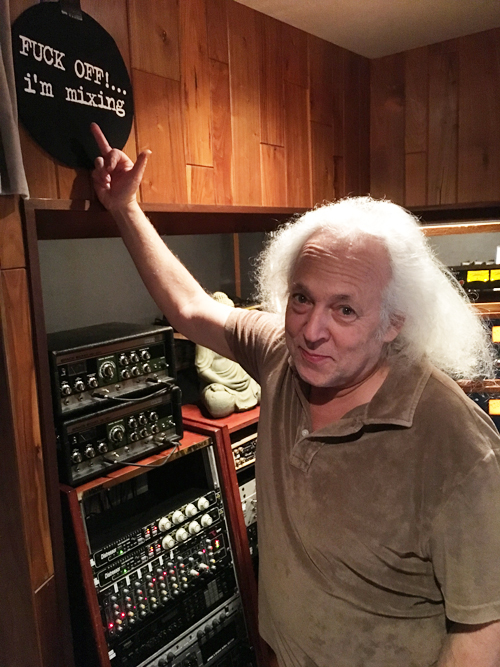
How did the music further evolve after the sessions?
Thelen: After the recording sessions, I edited all the tracks and selected the best takes, which I then sent to David for mixing. But of course, David did a lot more than just mixing. He added new parts, looped things and did a large amount of sound manipulation.
Torn: I received the multitracks with Stephan’s edits and for the most part, stuck with those edits. I did things to my own guitar parts, like repeating phrases that happened only once in the sessions and altering sound balances. I also felt I could make Stephan and Bernhard sound fuller and warmer, so I deepened their sound. Christian sounded amazing. I just extended what was there.
I also tend to animate things in mixes. I may use different levels of distortion in different parts of a piece. Most of these things aren’t elements people would ever pick out, because they’re done subtly. They’re not mixing tricks. They’re things I do to try to bring something forward or make something recede in a track without drastically changing the dynamic of what the band played. It’s an approach I noticed in Walter Quintus’ mixes when we did all those CMP albums together in the ‘90s. Walter did crazy shit. He would take 90 minutes to do something that would go by in two seconds, but defined the difference between what happened before it and what happened after.
Let’s go through the album’s six tracks and have you both provide your thoughts, starting with “Part 44.”
Thelen: The original “Part 44" was composed by Don Li, one of the most important and innovative figures in the Swiss minimal groove scene. Many people even say that he initiated that movement. His albums, particularly Gen and Out of Body Experience, were a big influence on Manuel and me. He has a beautiful performance space in Bern called Orbital Garden. He asked Sonar to play one of his compositions with him, which we did in June 2015. His pieces are all called “parts” and the particular one he wanted us to play with him was "Part 44," a 60-minute piece with a very interesting polyrhythmic structure where the guitars play in 7 and the rhythm section plays in 3+3+3+3+2. For the Sonar version of this piece, I kept the basic rhythm, but completely recomposed the guitar patterns and the harmonic movement of the piece. In a live context, the 4th and last part in E Flat—one of my favorite keys—became a typical Sonar-inverted focal point for the rhythm section, where the guitars steadily repeat an interlocking pattern and the bass and drums go wild. They went even a lot wilder when David played with us, an effect that his playing often had on us during these sessions.
Torn: This piece is about establishing space. I start out with a loop which I created in advance. You hear it coming in right away. The ambience starts almost immediately—just a second before Stephan and Bernhard come in. The recording sounds exactly the way we played it, with tremendous amounts of space between sections. You can also hear a sense of dirt in the bottom end. It’s a gritty sound, not a vintage one.
Stephan said he wanted deep low end in the bass. I said “You mean like the Massive Attack bassline from Mezzanine?” He said “Exactly.” So, I realized he wanted the bass to sound like a kind of drone and super-round under the fundamental note. That was a huge minute for me to understand what he meant and the piece sounds like that from the start.
Next up is “Red Shift.”
Thelen: On our second album Static Motion, there's a piece called “Twofold Covering.” The basic idea of that piece is Bernhard’s guitar and Christian’s bass play exactly the same pattern in 11, but in such a way that the bass pattern is one octave lower and half as fast the guitar pattern. In mathematics, you could say that the guitar pattern is a twofold covering of the bass pattern, hence the title. For “Red Shift,” I used the same idea, except now in 13, a time signature that I studied very closely for this record. The piece is in three parts: the first section is quite heavy and strictly composed, just Sonar without David. The second section is a tritone harmonics interlude with David and Manuel improvising over a guitar and bass pattern played only with the natural harmonics of the tritone tuning. The third section is typical of Sonar—a very slow build-up improvisation with lots of ambient sounds and loops from David.
Torn: I like this one. It’s a little more open-sounding than “Part 44” and my entry is delayed. I don’t start out with really hard, fuzzy sounds. I’m just playing through the amp. I like the micro-sampling things I do on this track. I would hit a chord and quickly sample four or five milliseconds of it and shift the pitch of it. You can hear that at the beginning of the really quiet section of this piece.
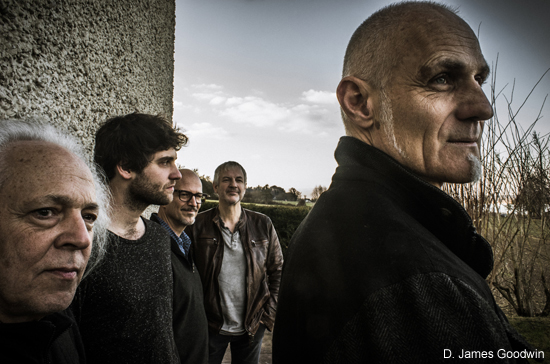
Let’s move on to “Wave and Particles.”
Thelen: This is perhaps my favorite piece. It has a spiritual quality that I really like and I love how David soars like an eagle over the constantly-shifting groove. It’s based on a ridiculously complex rhythm, but it flows very naturally, mainly because Manuel can play it as if it were a simple 4/4 beat. The hi-hat plays in 7, while the kick drum and the bass play in 9, so one complete cycle will take 63 beats. The guitars constantly play in different time signatures, either in 7, 9 or in 16+18+18+11, which of course adds up to 63. But, as a listener, you really don’t have to know this to enjoy the piece. What I strive to create as a composer is music that sounds simple and accessible on the surface, but actually is very complex and well thought-out if you want to dig deeper, and this piece—much like “Orbit 5.7” from Black Light—fulfills this ambition in my opinion. I admit I really have problems listening to most 4/4 rhythms, not because they sound simple, but because they lack the underlying complexity, shifting accents and elements of surprise that odd beats and polyrhythms can have.
The title of course has to do with what I said before about the dualism of David’s guitar playing, which I think of as the waves, and the guitar playing of the two Sonar guitarists, which I consider the particles. They are totally different on the surface, but in the end, they're just two different ways of describing the same thing.
Torn: I start with ambience on this track, along with fluttering micro-sampling. I wanted my harmonic response to add in other tones and notes that recolor the modal aspects of the band’s pattern-based playing. I’ll also do things like alter the feeling of the key signature in a certain way. I like to reharmonize things and carefully craft ambiences that are improvised. These things can create a feeling of suspense. You’ll also hear me playing melodies that are harmonically different from Stephan’s writing. I noticed, not unlike the more open improvisations I did with the Jan Garbarek band, that I could really shift the harmonic nature of the piece and add elements of surprise that hadn’t existed in Sonar’s music previously. I think that was an important part of my role working with the band.
What are your thoughts about “Monolith?”
Thelen: This was the last piece I composed for the album, just a few weeks before it was recorded. Like many Sonar pieces, it’s based on a rhythmic idea that juxtaposes two different rhythms, in this case a 9/8 guitar and hi-hat pattern grouped 4+3+2 and a 4/4 backbeat. We didn’t really have time to rehearse the piece, so it’s a basically an improvisation in the studio with a rather dark and monolithic atmosphere. I really love David’s expressive playing on this track, including the way his guitar howls like a wounded beast over the angular rhythm section. He can express more and deeper feelings of hope and despair with one long, bent note than other guitarists with 10,000 notes. His improvised contribution to this piece was so substantial that I decided to include him as a co-writer.
Torn: This has some of the best and most patient shifting of harmonics on the album as the piece floats along. I was playing chords and textures with melodic-type shapes along with these shifting harmonies. It felt like playing a cross between Miles Davis and Jon Hassell music, but without any soloists. That meant I could actually move the textures of the piece and harmony at the same time. It takes a while as a listener before you hear me playing anything that sounds like a real electric guitar.
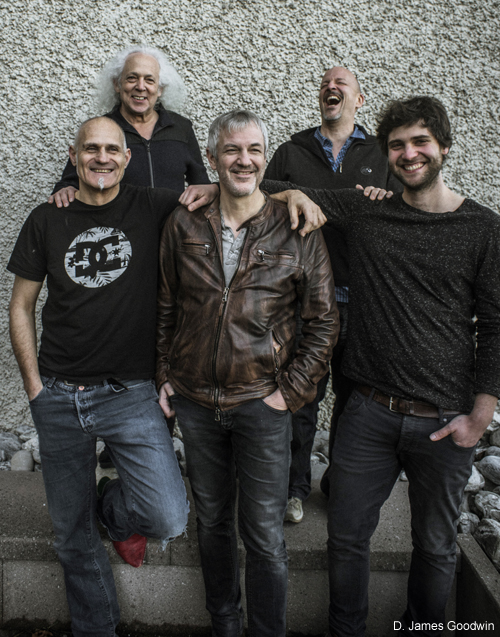
Let’s discuss the last composed piece for the album, “Vortex.”
Thelen: This is a very typical Sonar piece—a tritone harmonics composition that is based on two different subdivisions of 13, 3+3+3+4 and 5+5+3. Nevertheless, it was probably the hardest one to record and it’s by far the one with the most edits.
Torn: I start the piece with a major chord, which is something different for Sonar. I don’t think Stephan would ever start a piece with one of those. So, I was being simultaneously bold and cowardly when I did it. [laughs] You can hear these little bits on the track in which I did these parallel harmony things on the guitar that I’d subtly add to what was written. Christian is also really pushing the piece along and holding it down. Manuel is simultaneously careful with the composition and kicking ass.
The album closes with “Lookface!” which was totally improvised in the studio.
Thelen: On the afternoon of the third day of recording, we had recorded five pieces and knew that we had time for one more piece. Manuel wanted to try out an improvisation over one of the riffs that we had played during rehearsals, so we did one take which didn’t really impress me. But just as the last notes were fading, David shouted “Let’s do another take,” so I counted us in and all of a sudden, there were these powerful notes blasting out of David’s amplifier. As often before, his sudden surge of energy infected the band and we took off on a throbbing improvisation. On the album, towards the end of the piece, there is a crossfade into a duo improv that Manuel and David had done a few hours before and that’s the last thing you hear on the album.
Torn: This whole piece was about throwing caution to the wind, though I played with some circumspection. I tried to respect Stephan’s tritone concept and nailed the tritones to what they were playing as the root throughout. I chose to hit the notes over and over and fed them back in a million different ways while always returning to the root. On this track, you’ll also hear Manuel playing a downbeat that I felt needed to have a harmonic counterpart. I used detuned Gamelan instruments during the mixes to create that. They sound like gongs in a couple of spots in the track. I really like how this piece came out.
Tell me where the name “Lookface!” came from.
Torn: It was so out. [laughs] We were all out at a Turkish restaurant in Zurich one night during the sessions. We were all drinking Raki and were on the tipsy side. I had my guitar with me and the restaurant owner came up to me and got really excited when he realized we were musicians. Anil, I think you said “David plays oud.” The owner got even more excited and said “The guy who works in the kitchen played with David Bowie for 15 years.” Daniel piped in and said “David worked with David Bowie for 15 years.” The owner was totally hepped up at that point and said “You have to see this!” He runs back to the kitchen and comes out with a giant smartphone and pushes it into my face. He plays this video of a guy playing unbelievably fast, non-stop oud. I’m drunk at this point and he keeps pointing to the video and yelling “Lookface! Lookface!” over and over. What he meant was Facebook, which is where the video was playing from. The whole table was in total hysterics. And then the guy from the kitchen comes out and starts playing darbuka for us. It was completely confusing and funny. “Lookface!” turned into a running joke with everyone in the studio. That was a super-fun night.
Vortex is out on RareNoise. What does signing to the label mean for the band?
Thelen: RareNoise is a perfect label for us, and Giacomo Bruzzo who runs it, is one of the few good people in the music business. We really feel supported and respected by him. It’s a shift towards Europe and that is a good thing because we are a very European band and the label is based in London, which is relatively close to Zurich.
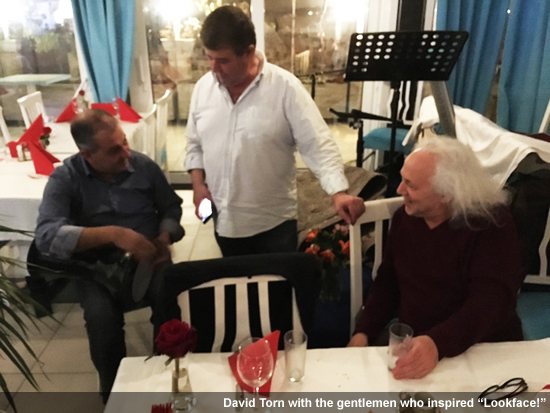
Give me an update on what’s coming up for both of you beyond the Sonar project.
Thelen: I recently had Kronos Quartet commission me to compose a piece for them titled “Circular Lines.” It meant the world to me. It was one of my life’s goals to write a piece for them. The piece is energetic, tightly-focused and propulsive in the post-minimalistic tradition of tonal and rhythmic music that aims to create maximum effect with minimum means. I wanted the quartet to be based on a 3-against-4-against-5 polyrhythm in which one instrument plays in 3/8, one in 4/8 and one in 5/8 while the fourth instrument—the wild card—either plays melodies on top of this continuum or supports one of the rhythmic layers. During the piece, every instrument has several opportunities to take each one of the four roles. Harmonically, similar to my first quartet, the piece starts in A minor and then shifts backwards through the circle of fifths until it reaches A minor again at the end. But I also wanted it to be a very emotional piece.
During the period in which it was composed, the dominant theme in Europe was the refugee crisis and how the selfish governments and people of Europe completely failed to find a compassionate way to deal with the unimaginable suffering of the refugees. The fact that I was constantly thinking about the crisis has surely found its way into the piece. Especially haunting for me was the image of people who would rather risk their lives getting into a ramshackle boat heading towards an unknown and potentially hostile future than stay in their home country. Yet still, despite all the suffering, many maintain hope and optimism, a fact which hopefully comes through in the piece. I’m thrilled Kronos has added “Circular Lines” to its performing repertoire and recorded it as part of its Fifty for the Future series.
I’m also working on a new solo album. After a few years of playing with Sonar where we don’t use any effects except reverb, I felt the urge to compose and record some pieces where effects were an integral part of the music, especially a kind of delay I had been working with before Sonar which I call “Fractal Guitar”—which will also be the album’s title. This is a kind of rhythmic delay with a very high feedback level that's used by The Edge, but in a way that the resulting delay patterns are in odd time signatures such as 3/8, 5/8 or 7/8. The other urge I felt was to work with some of the many great guitarists and musicians I’ve gotten to know over the years.
I’ve been working on and off on this album over the past two-and-a-half years and it has been a real pleasure to make. It has a very positive vibe and you can really hear how everybody had a great time playing on it, experimenting with fascinating sounds and highly-unconventional beats. My main partner on the album is Markus Reuter, who not only delivered some fantastic solos, patterns and textures, but is also mixing the album. David Torn plays on a few tracks. There are also great contributions from Henry Kaiser, Jon Durant, Bill Walker, and Barry Cleveland. Drums are played by Manuel and Benno Kaiser, who I played with in a band called Radio Osaka for many years.
Torn: I’m looking forward to Stephan’s solo record, as well as helping get Lana Cenčić’s forthcoming album out. She’s a vocalist and composer I’ve been working with. We’ve done six pieces together that I produced and arranged. I’m very excited about that. I’ve also done recent records with Tim Berne, Matt Mitchell and Kate Gentile, all of which ended up on the 2017 NPR Jazz Critics Poll. I either produced or mixed these albums. I have several productions coming up, including albums for Tom Rainey and Dustin Carlson. I’m also looking forward to potentially releasing a Sun of Goldfinger album for ECM this year. I’d also like to finish my big orchestral piece that I’ve been working on for a while, also for ECM. So, there’s a lot going on.
Watch a full-length documentary on Sonar with David Torn: